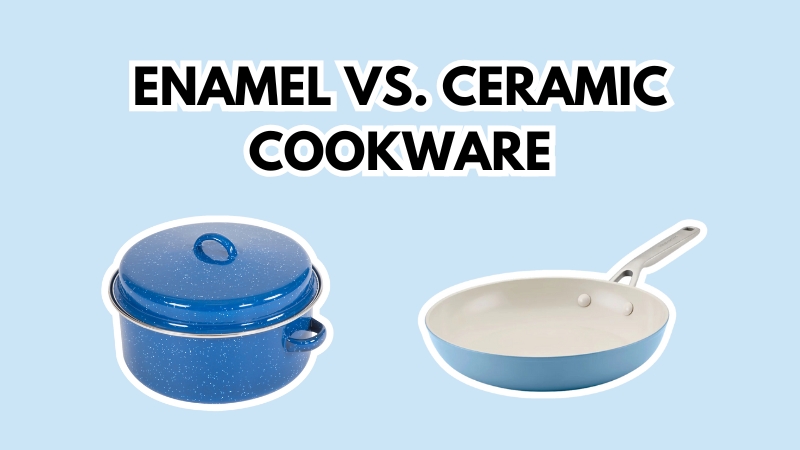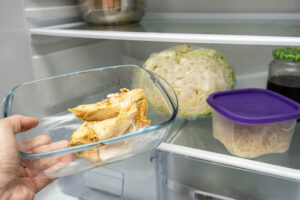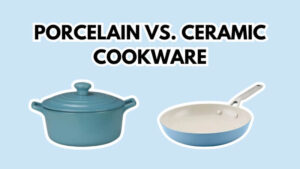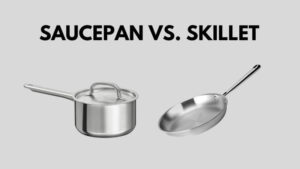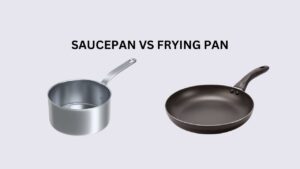Enamel and ceramic materials are the options at the top of the list for home-cooking. Known for their sleek designs, both materials promise a great cooking experience. However, they each come with unique advantages. This article is about my experiences when using enamel vs ceramic cookware, how it’s different, and what you should buy for your kitchen.
Highlight Pros and Cons
Enamel materials
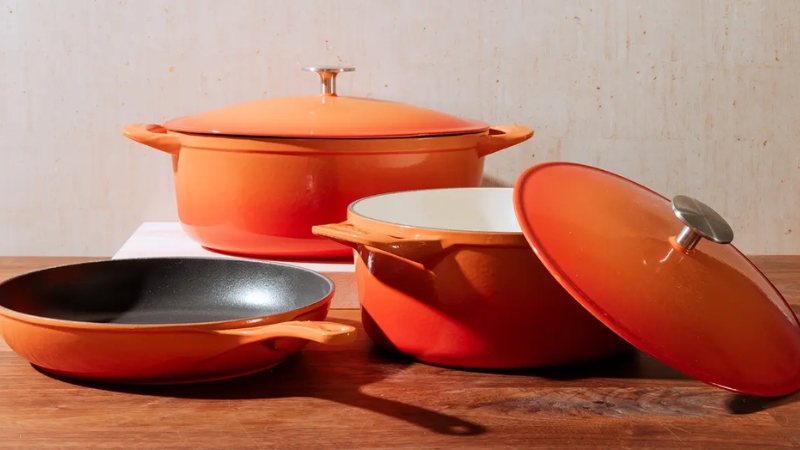
Enamel cookware is a popular choice for its durability and versatility. Made by coating cast iron or steel with a smooth enamel layer, it is resistant to rust and corrosion, but it can still stain or chip with heavy use. However, it can last for a long time when cared for properly after using.
The surface is non-reactive, so it is excellent for cooking acidic foods. Enamel cookware is also praised for its ability to retain and distribute heat evenly, which makes it great for slow cooking, braising, and simmering. Additionally, the glossy surface is easy to clean. Those pros explain why my kitchen has enamel cookware.
Is enamel cookware safe? Generally, it is considered safe for cooking the foods at home. As long as it is free from harmful chemicals and contaminants, you can confidently use it for cooking.
Enamel cookware does have its downsides. It tends to be heavy, which can make handling and storage more challenging. This is most often the case with cast iron varieties. The heavier build is also difficult for those who are new to cooking.
While the enamel coating is durable, it is prone to chipping or cracking if dropped or exposed to sudden temperature changes. Unlike ceramic cookware, it is not inherently non-stick, so some oil or butter may be needed when cooking.
Ceramic materials
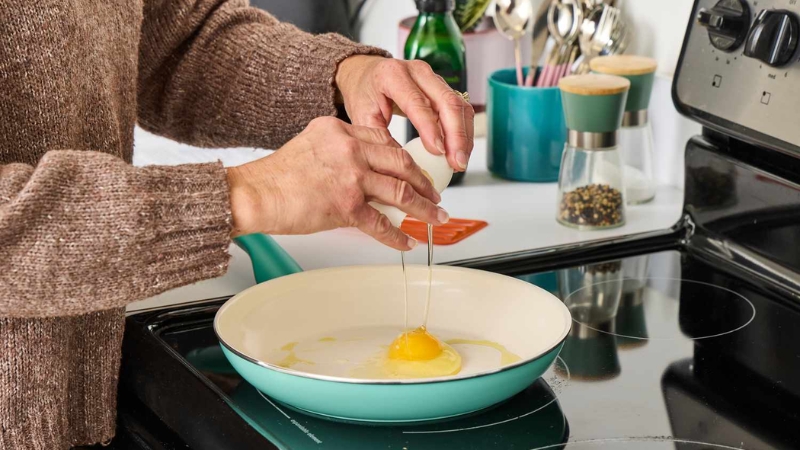
Lots of people and I like ceramic cookware because its smooth surface makes cooking and cleaning effortless. However, people often misleading granite cookware vs ceramic cookware. They are different to each other. Most of the time, ceramic requires little to no oil. This is good for those who want to prepare meals without adding extra fats. Many ceramics are made with PTFE or ceramic-coated materials.
Those who are new to cooking also appreciate that ceramic cookware is lightweight. Regarding enamel vs ceramic cookware, it is easier to handle, especially when dealing with large quantities of ingredients. It also heats evenly, ensuring consistent cooking.
Despite its benefits, ceramic cookware does have some limitations. While durable, the ceramic coating can chip, scratch, or crack if handled roughly. It is also sensitive to sudden temperature changes, which may cause warping over time.
Moreover, ceramic cookware generally does not retain heat well, making it less suitable for slow cooking or keeping food warm. It is also not the best choice for high-heat cooking, as extreme temperatures can degrade its non-stick properties. Alongside this, knowing how to clean ceramic cookware is important to keep it in good shape for years to come. However, after using it for a period of time like a year, I suggest replacing it with a new one for safety when cooking, making sure that you have the best meal when using ceramic.
Searching Trends of Each Cookware
This graph compares the interest in enamel and ceramic cookware from 2020 to 2025. Blue is for enamel cookware and red is for ceramic cookware.
Interest in ceramic cookware is significantly higher than enamel cookware throughout the timeline. Peaks in interest are noticeable, particularly during holiday seasons. One possible reason is its aesthetic appeal, which makes ceramic cookware a highly sought-after choice for gifting.
Interest in enamel cookware is lower in terms of enamel vs ceramic cookware, but there are no significant spikes over time. This means that enamel cookware maintains a steady yet smaller following, appealing to a specific, stable group of users.
My Sharing Experiences
The number one praise I have for ceramic cookware is that it provides a seamless experience in the kitchen. Food slides off effortlessly, even delicate items like eggs or pancakes, reducing the hassle of scraping or scrubbing after cooking.
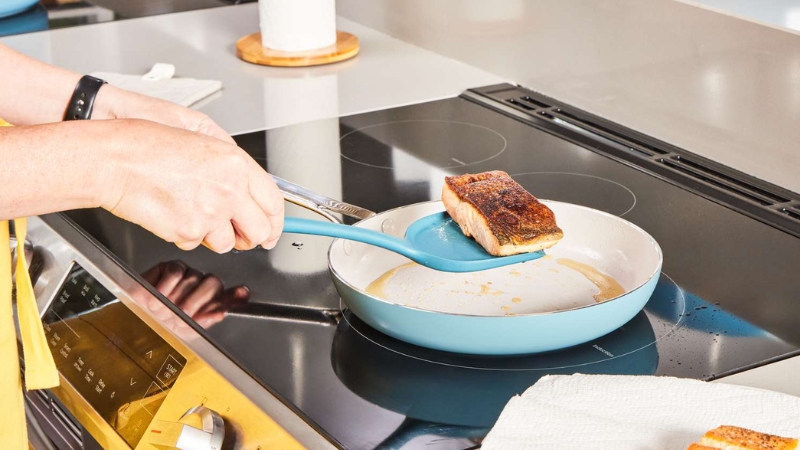
The lightweight design of most ceramic pots and pans make them easy to handle. Plus, when cooking with ceramic cookware, even heat distribution ensures consistent cooking results. Burnt spots are usually not a concern. However, it is necessary to avoid using metal utensils and cooking on high heat to prevent damage.
I use enamel cookware for its heat retention, which is perfect for tasks like slow cooking or braising. The added weight enhances its stability on the stovetop, ensuring even cooking without tipping, and the enamel coating prevents food from sticking too much, though some oil or butter may still be needed.
Cleaning is generally easy, but like ceramic cookware, extra care is needed to ensure it lasts for years. After cooking at high temperatures, I usually let it cool down on the stove before rinsing it with water to clean.
Closing Thoughts
Both enamel and ceramic cookware are excellent choices for different cooking needs. The latter is popular for everyday cooking and gifting, while the former is especially praised for slow cooking. I have both in my kitchen for each of the cooking purposes. What about you?

